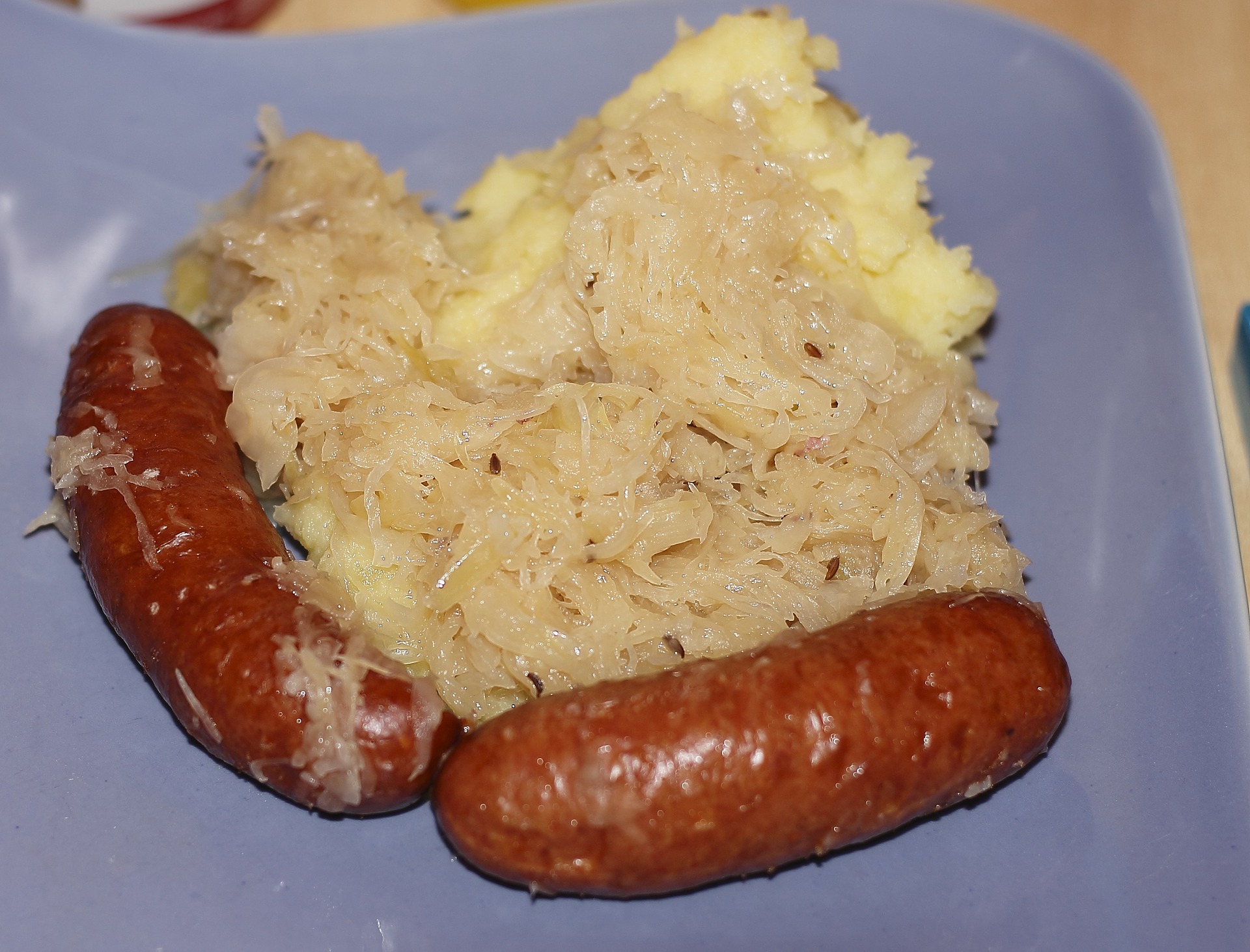Sauerkraut versus kimchi: Let’s break down the difference between these two types of fermented cabbage.
- Sauerkraut: cabbage cut fine, salted, and allowed to ferment until sour.
- Kimchi: a spicy pickled or fermented mixture containing cabbage, onions, and sometimes fish, variously seasoned, as with garlic, horseradish, red peppers, and ginger.
From the definition alone, we can see that Kimchi is a more complex food item, basically a dish in and of itself. Sauerkraut, on the other hand, is more of an ingredient that you would then add to other dishes, such as with kielbasa or in Reuben sandwiches.
Before delving into sauerkraut and kimchi, we must first understand what fermentation is.
With processed foods, fermentation is a chemical alteration that changes a substance into a simpler one. (It can also convert sugar into alcohol.) There are different kinds of fermentation that can occur naturally, but we humans have been using it to preserve foods for many years.
With sauerkraut and kimchi, the shredded or chopped cabbage is fermented in a salty brine. The end result is a preserved form of cabbage that has a nice, tangy zing to it.
Sauerkraut:
- Is generally made from green cabbage.
- The cabbage is very finely shredded.
- Is fermented at 64 to 76 degrees F for 1 to 6 weeks.
- The final salt content is 1 to 2%.
- The only ingredients are the cabbage and the salted brine.
- Has a tangy flavor with a bit of a bite to it.
Kimchi:
- Was originally made from daikon radishes.
- Is generally made from Napa cabbage.
- The cabbage is cut into large chunks.
- Includes other foods and seasonings such as Korean chili pepper, garlic, scallions, fish sauce, etc.
- Is fermented at 41 to 57 degrees F for 1 to 3 weeks.
- The final salt content is 3%.
- Can be, but isn’t always, spicy.
Both sauerkraut and kimchi originated in Asia many centuries ago, or even earlier. The process of fermentation allowed folks to preserve and travel with vegetables like cabbage.
Kimchi is associated with Korea in specifically, and is their national dish today. While there are different kinds of sauerkraut, hundreds of varieties of kimchi exist. You can read more about the history of kimchi here.

Comments
3 responses to “Difference between: sauerkraut and kimchi”
Where can I buy this
Good earth food coop
Sauerkraut is made with other ingredients, although, admittedly, no animal products. Depending on style, region, or family preference, prunes, cranberries, carrots, celery root etc. can be found. Also, the size and shape of pieces can vary widely. In part of eastern Europe, cabbage core is removed and the whole cabbage heads are packed tight in a brine in a large jar. In my home, cabbage was sliced thin for a more decorative presentation.